Health Reform Money Is Aimed at Red States
Sen. Max Baucus' health care plan would shift massive amounts of tax money away from traditionally blue states.It is “a stunning assault on liberty” (Sen. Jon Kyl, Republican of Arizona). It is “trying to force or foist a one-size-fits-all solution on the states” (Sen. Orrin Hatch, Republican of Utah). It is a plan that “taxes too much and grows government too much” (Sen. John Cornyn, Republican of Texas).
It is also a massive shift of tax money from constituents of traditionally liberal and Democratic states to constituents of traditionally conservative and Republican states.
This went unremarked in the hours of bipartisan gas-bagging that opened the Senate Finance Committee’s markup of its version of health care overhaul legislation. As it happens, just as the panel began its arduous effort at reshaping the proposal put forward by Sen. Max Baucus, D-Mont., the Census Bureau was giving us a very good look at just which Americans would benefit most from an effort to cover more people — as well as who would really get those taxpayer subsidies to buy insurance, and which states would gain the most from Medicaid changes to assure the poorest reasonable access to medical care.
Overall, about 15 percent of Americans are uninsured, according to the 2008 American Community Survey. But here is the state-by-state picture:
“Thirty-one states and the District of Columbia had uninsured rates that were lower than the national figure,” an analysis written for the Census Bureau says. “All of the states in the Midwest and Northeast are included in this group. Nineteen states had uninsured rates higher than the national figure; 10 of these states were located in the South and the other nine were located in the West.”
The state with the highest proportion of uninsured is Cornyn’s Texas, where 24 percent of residents are without coverage. The other four states with uninsured rates of 20 percent or more are Alaska, Florida, Nevada and New Mexico.
States with uninsured rates between 17 percent and 20 percent also are in the Deep South and the West. They include Montana (Baucus), Arizona (Kyl) and Idaho, represented on the Finance Committee by Republican Mike Crapo.
If you superimposed the Census Bureau’s color-coded map of the states’ percentages of uninsured residents, it would bear quite a resemblance to those election-night maps of red and blue America. Yet blue-state America, through its mostly Democratic representatives, seems willing — for fiscal, political or moral reasons — to extend its hand and open its wallet so that red-state Americans can get health insurance.
“It’s not a nationally uniform problem,” says Steve Zuckerman, senior fellow at the Urban Institute and an expert on Medicaid. Because there has to be a greater improvement in coverage in the South and West, Zuckerman says, “there will be a geographic redistribution.”
The low rates of coverage in the South and West result from low rates of employer-based insurance, Zuckerman says. Meanwhile, these states are also less likely to have tried to close the gap with Medicaid. They historically have imposed tight income restraints on and other eligibility barriers to the joint federal-state program for low-income people. In Texas, a working parent must have an annual income below 27 percent of the federal poverty level — that amounts to $5,953.50 for a family of four — in order to qualify for Medicaid, according to the Kaiser Family Foundation.
The regions are traditionally hostile to unions, and companies that are unionized tend to offer better insurance coverage than those that are not. Yet it is these very unionized workers and their employers who may be hit with a proposed excise tax on high-cost policies — taxes that would flow to the uninsured in the form of subsidies to buy insurance.
Legislation in both houses would require an expansion of Medicaid to cover more adults, as well as more children who are covered separately. In the Baucus proposal, this amounts to $287 billion in new federal spending, according to the Congressional Budget Office. Much of it would flow to states that have avoided expanding Medicaid coverage. States that already have extended coverage — the most generous are in the Northeast and Midwest — would not get such a large infusion of new money.
With all this cash flowing in their constituents’ direction, you might think that some red-state congressional Republicans would quiet the rhetorical warfare in the interests of their states’ well-being. Instead, they mimic those Republican governors who vowed to refuse federal economic stimulus money — only to take it and stage ribbon-cuttings in celebration.
Political hypocrisy knows no party and, often, no bounds. The wonder is that well-intentioned Americans put up with it — and are going to pay for it, too.
Marie Cocco’s e-mail address is mariecocco(at)washpost.com.
Independent journalism is under threat and overshadowed by heavily funded mainstream media.
You can help level the playing field. Become a member.
Your tax-deductible contribution keeps us digging beneath the headlines to give you thought-provoking, investigative reporting and analysis that unearths what's really happening- without compromise.
Give today to support our courageous, independent journalists.
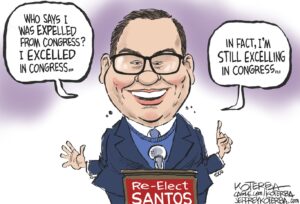
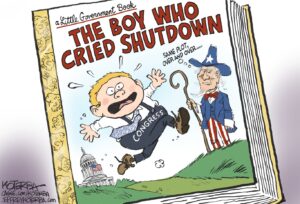
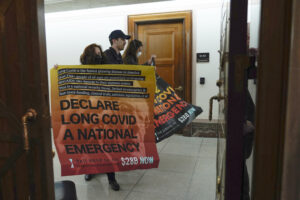

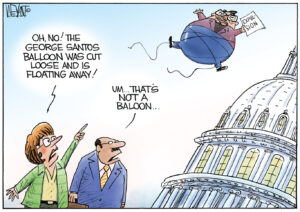
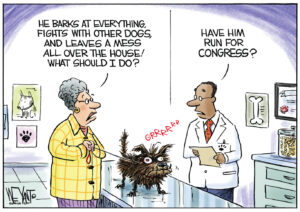
You need to be a supporter to comment.
There are currently no responses to this article.
Be the first to respond.